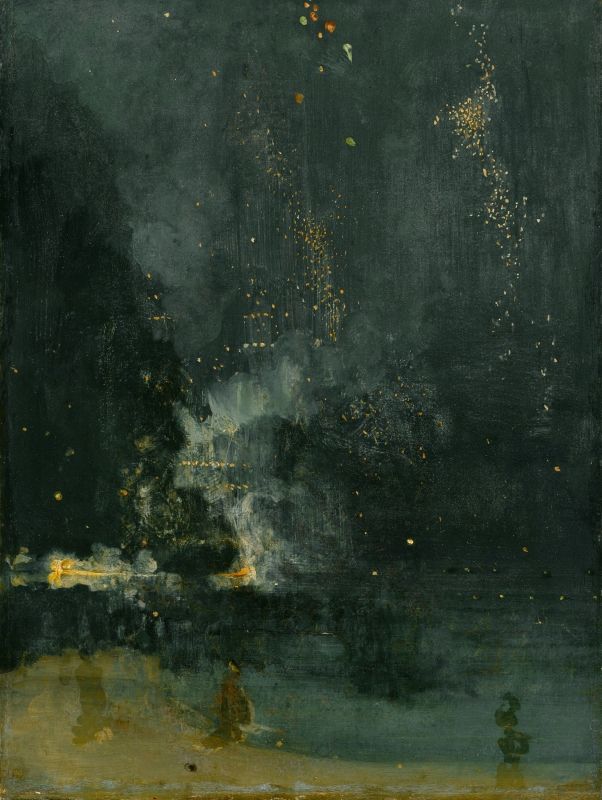Nocturne in Black and Gold: The Falling Rocket probably dates from 1875. 1
On 18 September 1875, Whistler's mother Anna Matilda Whistler (1804-1881) mentioned Whistler's 'Moonlight pictures' including 'one lately finished of Cremorne Gardens at Chelsea'. 2 These probably included Nocturne in Black and Gold: The Falling Rocket.
It was first exhibited in the Ninth Winter Exhibition of Cabinet Pictures in Oil, Dudley Gallery, London, 1875 (cat. no. 170) as 'Nocturne, in Black and Gold – The Falling Rocket'.
Last updated: 8th June 2021 by Margaret






